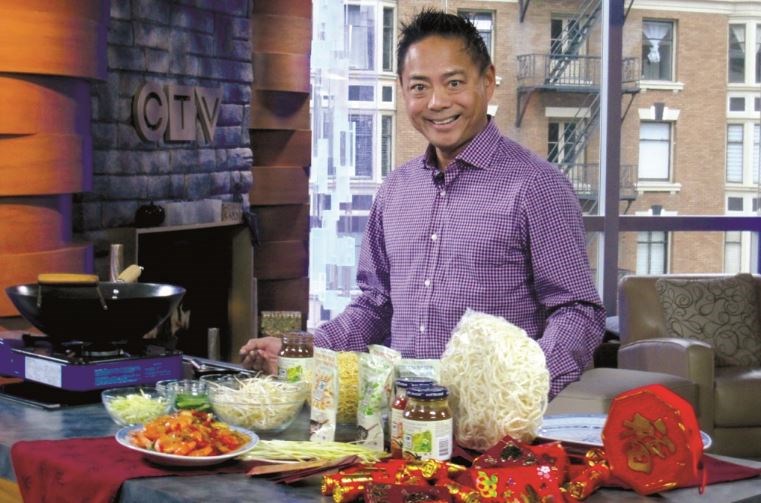As with many cultures, food takes a strong presence in celebration festivities, but especially for the Chinese and their New Year. It’s not only a great time for commemoration, but also the start of huge multi-course culinary feasts, traditionally eight or nine courses because both are lucky numbers ‑— eight sounds like the Cantonese word for prosperity, while nine means “long lasting.” These multi-course meals are also symbolic and represent wealth, luck, happiness and long life.
Traditional upscale banquet-style dinners start with a wonderful opening such as a sublime soup and include special poultry dishes such as crispy skinned Peking duck wrapped with warm crepes or a crisp skinned whole chicken (a whole chicken symbolizes a proper beginning and end to the year), whole steamed fish with julienned ginger and green onions (served whole, head to tail intact as it represents a favourable beginning and end for the New Year), and always ending with e-fu mein, also known as “long-life” noodles. Shellfish, such as lobster or crab, is also served as it represents the life and energy of the powerful dragon.
One of my favourite classic dishes served on these special occasions is poached or steamed whole fish. This symbolizes a few meanings, ironically derived from a play on words: the Cantonese word for fish is “yu,” which also sounds like the word for wish, thus eating fish for New Year’s ensures one’s wishes to come true for the New Year. Serving fish also represents a symbol of marital bliss and fertility, since fish commonly swim in pairs. In cooking, many Chinese believe that one should specifically pick a live swimming fish, which represents a strong will and spirit and having strong tenaciousness symbolizes the fish’s immortality. Consuming fish symbolizes ingesting long life and good luck.
Other dishes that may be served are clams or scallops, which symbolize wealth and good fortune, since these particular seafood creatures have a similar shape to that of coins. Roast pig signifies peace and purity, while oysters and green lettuce represent good fortune and prosperity. Esteemed dishes, such as bird’s nest or fish maw soups, usually rich with seafood, represent rarity. Other luxury foods include squab, pea shoots, baby bok choy, shrimp, abalone and crab. Both rice and long-life noodles are also important dishes because rice symbolizes “plentifulness” for the coming year. With noodles, the longer the better, if you want a long life. Don’t cut them shorter as you’ll signify cutting your life shorter.
Stir-Fried Shrimp with Garlic and Chili Sauce
The Chinese like to crisp the texture of shrimp so they are quickly soaked in a light brine solution before stir-frying. Serves four as part of a multi-course meal.
- 1 ½ tbsp salt
- 2 cups cold water
- 1 ½ lbs large shrimp, peeled and deveined
- ½ cup chicken stock
- 2 tsp dry sherry
- or rice wine
- 2 tsp light soy sauce
- 2 tsp cornstarch
- 1 tsp sugar
- ¼ tsp ground white pepper
- 1 tbsp canola oil
- 2 tbsp freshly minced garlic
- 1 ½ tsp freshly minced ginger
- 1 jalapeno chili, seeded and finely chopped
- ½ tsp sesame oil
- 2 green onions, cut into one-inch pieces
Combine the salt and cold water in a large bowl and stir until salt is dissolved. Add shrimp and let sit for 10 minutes. Drain and rinse shrimp under cold water and dry well on a baking sheet lined with paper towel.
In a small mixing bowl add the chicken stock, sherry or rice wine, soy sauce, cornstarch, sugar and pepper and mix well.
Heat a 14-inch flat bottom wok over high heat. To test heat, a drop of water should vapourize within one to two seconds of contact. Add the oil and swirl to coat bottom of wok; add the shrimp and stir-fry for about one minute or until they start to turn pink.
Add the garlic, ginger and chopped chili and stir-fry for one minute. Add the cornstarch mixture and stir-fry until it starts to boil. Toss until the shrimp are just cooked through and the sauce has thickened, about another minute. Add the green onions and mix well.
Nathan Fong is an award-winning food and travel journalist and founder of Fong on Food.



